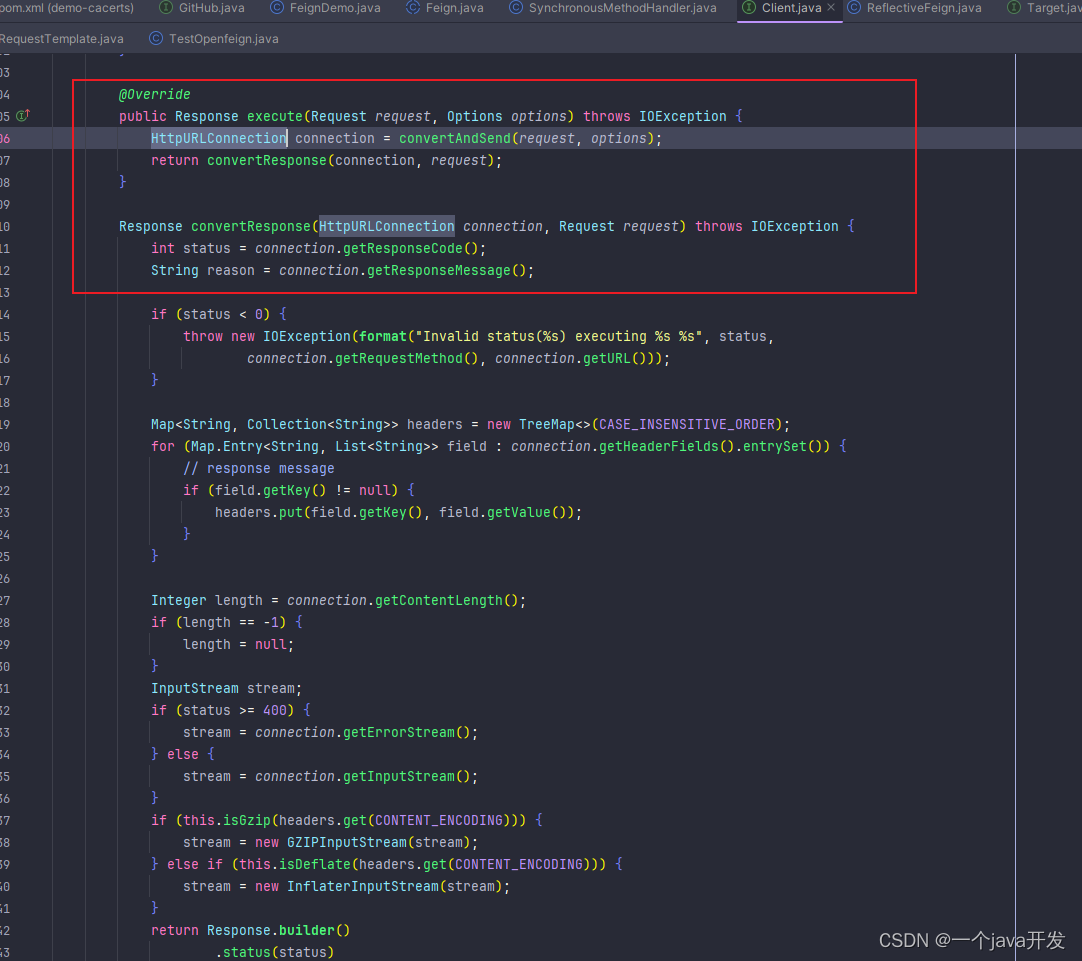springcloud==openfeign
单独使用
创建一个服务端
import org.springframework.boot.SpringApplication;
import org.springframework.boot.autoconfigure.SpringBootApplication;
import org.springframework.web.bind.annotation.GetMapping;
import org.springframework.web.bind.annotation.PathVariable;
import org.springframework.web.bind.annotation.RestController;
@SpringBootApplication
public class UserServiceApplication {
public static void main(String[] args) {
SpringApplication.run(UserServiceApplication.class, args);
}
@RestController
class UserController {
@GetMapping("/users/{id}")
public User getUser(@PathVariable String id) {
// 模拟用户信息
return new User(id, "User" + id);
}
}
class User {
private String id;
private String name;
// 构造函数、getters、setters
}
}
创建一个客户端用openfeign去访问服务端
客户端的依赖
<dependency>
<groupId>io.github.openfeign</groupId>
<artifactId>feign-core</artifactId>
<version>13.1.0</version>
</dependency>
<dependency>
<groupId>io.github.openfeign</groupId>
<artifactId>feign-gson</artifactId>
<version>13.1.0</version>
</dependency>
import feign.Feign;
import feign.gson.GsonDecoder;
import feign.Param;
import feign.RequestLine;
public class FeignDemo {
interface UserClient {
@RequestLine("GET /users/{id}")
User getUserById(@Param("id") String id);
}
public static void main(String[] args) {
UserClient userClient = Feign.builder()
.decoder(new GsonDecoder())
.target(UserClient.class, "http://localhost:8080");
User user = userClient.getUserById("123");
System.out.println(user.getName());
}
static class User {
private String id;
private String name;
// getters 和 setters
}
}
其中openfeign的作用:
执行了几个关键步骤:
动态代理: Feign 使用了动态代理设计模式来创建 UserClient 接口的代理实例。这是一种结构型设计模式,允许在运行时创建一个实现了一组接口的对象。
构建请求模板: 对于接口中的每个方法,Feign 会构建一个请求模板,该模板包含了请求的方法、URL 和参数等信息。
反射: Feign 通过 Java 反射机制来解析接口上的注解,这样它就能了解如何构建 HTTP 请求和处理响应。
构建 HTTP 客户端: Feign 使用构建好的配置创建一个 HTTP 客户端,这个客户端用于发送请求。
请求拦截器: 如果配置了请求拦截器,Feign 会在发送请求之前处理这些拦截器,这常用于添加身份验证信息等。
装饰器模式: Feign 可以使用装饰器模式来包装 HTTP 客户端,添加额外的功能,如日志记录、重试机制等。由于客户端是单纯用了openfeign,所以最终是建立一个HttpURLConnection,然后发出请求

